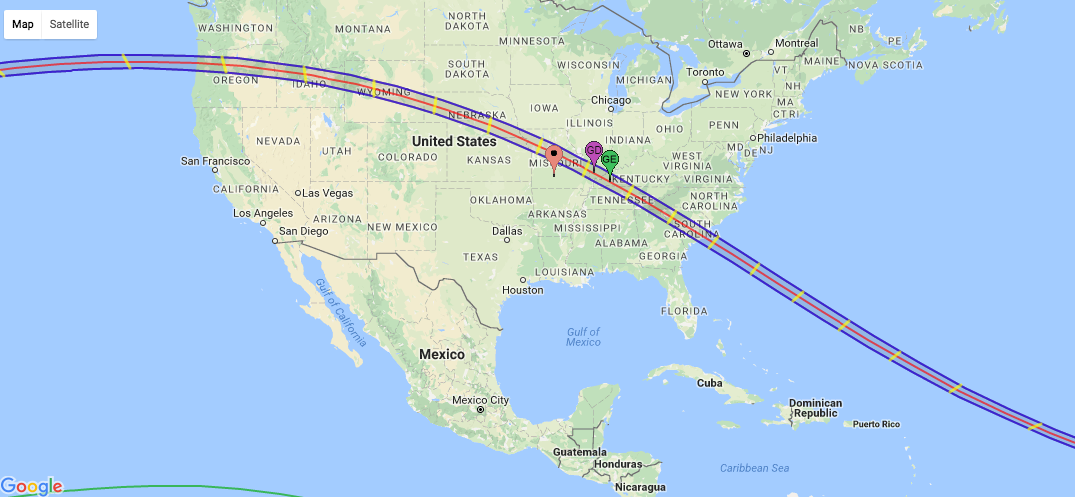
Register
Parents
Parents of current McDonogh students may sign up for website accounts. Signing up for an account allows a parent to access the online directory, DASH, and your customized parent Personal Page.
Alumni
Alumni can create an account in order to take advantage of McDonogh Connect or Pledgemail.
Login
News & Photos
Solar Eclipse: Don’t Be Kept in the Dark

With excitement building for the solar eclipse on Monday, August 21, we
wanted
to share a document called The Solar Eclipse is Coming, which was prepared last
spring by Upper School teacher Martin Schmidt and the students in his Honors
Astronomy & Weather class. Not only does the fact sheet explain the science
behind an eclipse, it includes the timeline for the Baltimore area. The student
astronomers also stress the importance of never looking directly at the sun
during a total or partial eclipse.
The following facts are from The Solar Eclipse is Coming:
- A solar eclipse occurs when the moon blocks our view of the sun.
- The total eclipse will be visible on a long narrow path (the path of totality)
extending from Oregon to South Carolina. The maximum time of total eclipse on
the path of totality is 2 minutes and 40 seconds.
- Both in the totality path and everywhere else, there will be a partial eclipse
for
over 2 hours as the moon moves gradually across the face of the sun to a
maximum coverage, then gradually moves off. This extended partial eclipse is
what will be visible in the Baltimore area. The duration of the eclipse in Baltimore
will be: 2 hours and 43 minutes.
- The eclipse timeline for Baltimore on Monday, August 21 is:
- Partial eclipse begins at 1:18 p.m.
- Maximum eclipse is at 2:42 p.m. when coverage will be about 80%
- Partial eclipse ends at 4:01 p.m.
While Baltimore is not on the “path of totality” and will only experience a
partial
eclipse, many members of our community will be traveling to viewing locations
across the country. If you are planning to watch the eclipse, send a picture of you
and your location to
mbower@mcdonogh.org for a post-eclipse photo essay.

With excitement building for the solar eclipse on Monday, August 21, we wanted to share a document called The Solar Eclipse is Coming, which was prepared last spring by Upper School teacher Martin Schmidt and the students in his Honors Astronomy & Weather class. Not only does the fact sheet explain the science behind an eclipse, it includes the timeline for the Baltimore area. The student astronomers also stress the importance of never looking directly at the sun during a total or partial eclipse.
The following facts are from The Solar Eclipse is Coming:- A solar eclipse occurs when the moon blocks our view of the sun.
- The total eclipse will be visible on a long narrow path (the path of totality) extending from Oregon to South Carolina. The maximum time of total eclipse on the path of totality is 2 minutes and 40 seconds.
- Both in the totality path and everywhere else, there will be a partial eclipse for over 2 hours as the moon moves gradually across the face of the sun to a maximum coverage, then gradually moves off. This extended partial eclipse is what will be visible in the Baltimore area. The duration of the eclipse in Baltimore will be: 2 hours and 43 minutes.
- The eclipse timeline for Baltimore on Monday, August 21 is:
- Partial eclipse begins at 1:18 p.m.
- Maximum eclipse is at 2:42 p.m. when coverage will be about 80%
- Partial eclipse ends at 4:01 p.m.
While Baltimore is not on the “path of totality” and will only experience a partial eclipse, many members of our community will be traveling to viewing locations across the country. If you are planning to watch the eclipse, send a picture of you and your location to mbower@mcdonogh.org for a post-eclipse photo essay.